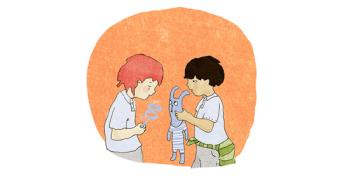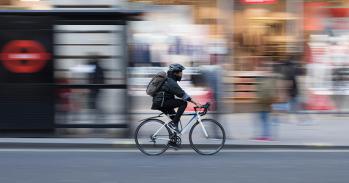
The largest-ever smartphone-based study examining the relationship between physical activity and happiness has found that even minimal levels of activity can have a positive effect on happiness.
The largest-ever smartphone-based study examining the relationship between physical activity and happiness has found that even minimal levels of activity can have a positive effect on happiness.
In order to be happier, you don’t have to go out and run a marathon.
Jason Rentfrow
A new study, based on reports from more than 10,000 individuals, has found that physical activity, whether or not it is classified as exercise, can have a positive effect on emotional well-being. The results, by researchers from the University of Cambridge and the University of Essex, are reported in the journal PLOS ONE, and demonstrate how smartphones can be used to collect large-scale data to examine psychological, behavioural and health-related phenomena as they occur in everyday life.
Using data gathered from users of a mood tracking app for Android phones, the researchers found that modest levels of physical activity – even if it couldn’t be classified as exercise – can increase a person’s reported emotional well-being, regardless of their baseline level of happiness. They also found that people reported being happier when they were physically active.
Earlier studies in this area have focused on the relationship between exercise and happiness, with mixed results. Some studies have found that happier people report exercising more, while others have found no relationship between happiness and exercise. Much of this past research has relied solely on retrospective self-reports, on data collected at only one time period, and on small samples.
For the new study, data on physical activity was passively gathered from smartphone accelerometers, and participants were also sent a short survey at two random intervals throughout the day which asked questions about their emotional state. Users reported their emotional state on a grid, based on how positive or negative, and how energetic or sleepy, they were feeling. Users were also asked a handful of questions about how their mood compared to normal.
The activity data was then averaged over the course of the day, so while the researchers could not pinpoint what participants were doing at any given time, they found that participants who had higher levels of activity throughout the day reported a more positive emotional state.
“Our data show that happy people are more active in general,” said the paper’s senior author Dr Jason Rentfrow, from Cambridge’s Department of Psychology and a Fellow of Fitzwilliam College. “However, our analyses also indicated that periods of physical activity led to increased positive mood, regardless of individuals’ baseline happiness. There have been many studies about the positive psychological effects of exercise, but what we’ve found is that in order to be happier, you don’t have to go out and run a marathon – all you’ve really got to do is periodically engage in slight physical activity throughout the day.”
“Most of us don’t keep track of all of our movements during the day,” said study co-author Dr Gillian Sandstrom from the Department of Psychology at the University of Essex. “A person might track whether they went for a walk or went to the gym, but when asked, most of them probably wouldn’t remember walking from the desk to the photocopier, or from the car to the office door.”
“This study shows how mobile and wearable technology really can allow social psychologists to perform large longitudinal studies as well as open a direct and permanent connection with the users for advice and intervention,” said study co-author Professor Cecilia Mascolo from Cambridge’s Computer Laboratory.
The research was supported by the UK Engineering and Physical Research Council’s UBhave (Ubiquitous and Social Computing for Positive Behaviour Change) project.
Reference:
Lathia, N. Sandstrom, G.M., Mascolo, C., & Rentfrow, P.J. ‘Happier people live more active lives: Using smartphones to link happiness and physical activity.’ PLOS ONE (2016). https://journals.plos.org/plosone/article?id=10.1371/journal.pone.0160589

The text in this work is licensed under a Creative Commons Attribution 4.0 International License. For image use please see separate credits above.




